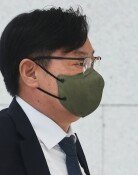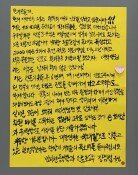Last crown prince
The movie "The Last Emperor," the winner of nine Academy awards in 1988 including those of best picture and best director, which was directed by Bernardo Bertolucci, addresses the life of Henry Puyi (1906-1967). Puyi, who was crowned as emperor at age two in 1908, gets confined at the Forbidden City at age five due to the collapse of the Qing Dynasty. Puyi moved to Manchuria later, and was inaugurated as puppet emperor of the Manchuria State, the puppet government founded by Imperial Japan as beachhead for its invasion in 1932, and became a war criminal after Japans collapse.
It was King Yeongchin (1897-1970), the last crown prince of the Korean Empire, that received Puyi when the latter was on a tour to Japan in July 1940. Imperial Japan thus presented a scene wherein the successors of two dynasties encountered each other as doomed emperor and crown prince who were caught in sudden changes of history. King Yeongchin, Lee Eun, is the seventh son of King Gojong, and half-brother of King Sunjong. He was crowned as crown prince at age 10, but was taken to Japan by force at the suggestion of Hirobumi Ito, the then resident-general in Korea, in December that year. He was brought to Japan at the pretext of study but was a hostage in reality.
Yeongwon Garden is the burial site of King Yeongchin and his wife, who lived a truly regrettable, heartbreaking life. The tomb, located within the precinct of Hongyu-reung in Namyangju, Gyeonggi Province, will be open to the public for the first time from May 10. King Yeongchin left his parents at a young age, and had marriage of convenience with Masako (1901-1989), a member of the Japanese royal family. The measure was taken by Japan to annex the Korean royal family into the Japanese royal family. Even though he had Min Gap-wan who had been picked as his fiancé and crown princess early on, Imperial Japan unilaterally ruled their engagement void.
King Yeongchin, who lived the final pages in the last chapter of the Joseon Dynasty and the Korean Empire, lived a truly unfortunate life due to Japans plots. He was deprived of his stature as member of the royal family after Japans collapse, and lived as a person without nationality, because he was denied nationality by both Korea and Japan. He was not allowed to visit his fatherland ever after Koreas liberation from Japan due to the Rhee Syngman administrations policy that "The Royal Family of Joseon shall not be recognized. He returned to Korea while suffering from stroke in 1963, but was not able to recover until he died. His life vividly reflects the tumultuous history of Korea. What would the ill-fated crown prince think in his tomb, watching Japanese Prime Minister Shinzo Abe claim a history that is different from what he experienced and remember?
mskoh119@donga.com
Headline News
- Med professors announce intention to leave hospitals starting Thursday
- Bridge honoring Sgt. Moon Jae-sik unveiled in Pennsylvania
- Chief of Staff Chung tells presidential secretaries to stay away from politics
- US FTC bans noncompete agreements
- N. Korea launches cyberattacks on S. Korea's defense companies







